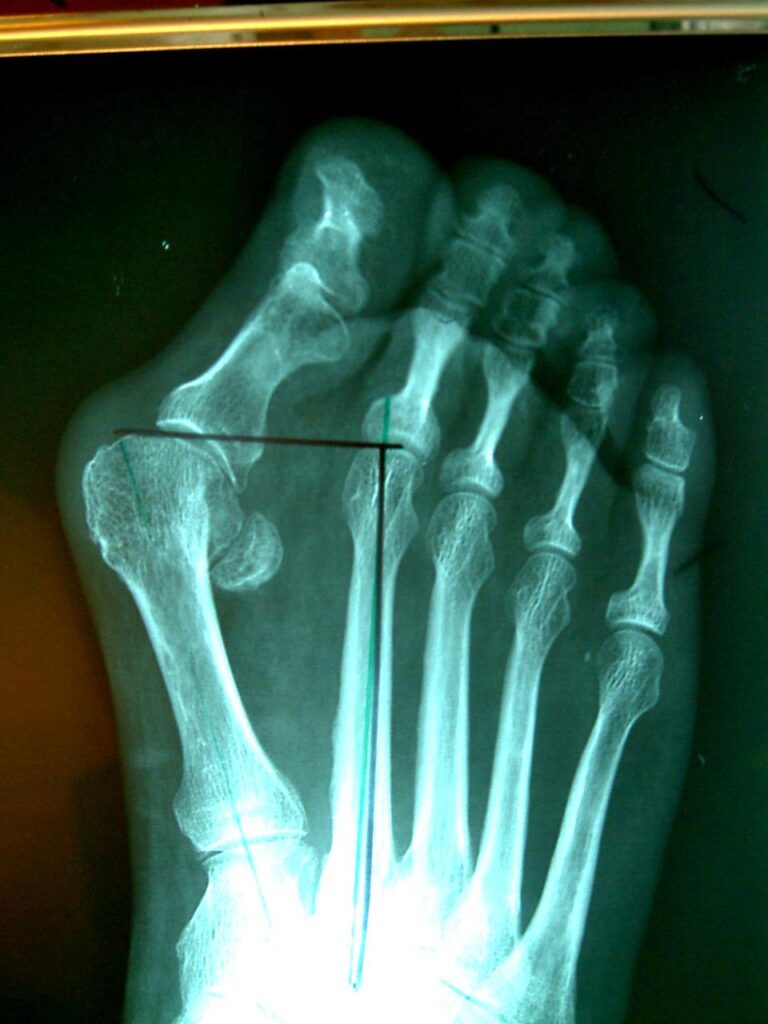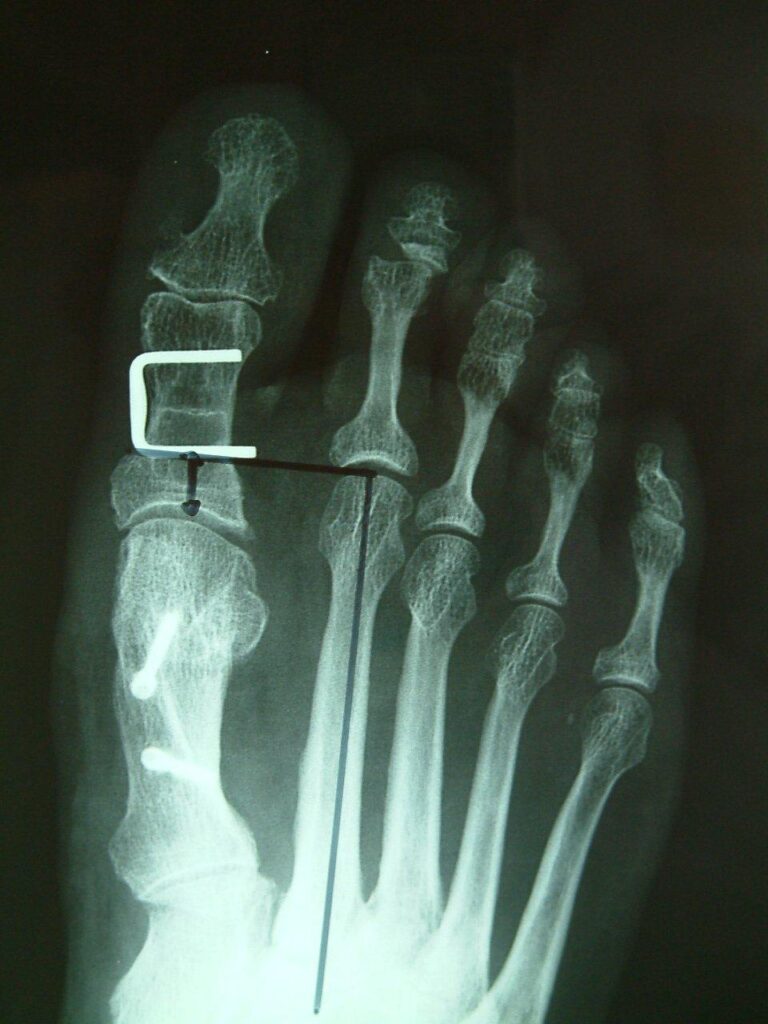Bunions are a common deformity in the community. They are thought to occur due to a muscle imbalance that is often inherited. Inappropriate footwear may exacerbate the condition however is not usually the underlying cause. Bunions worsen with advancing age and can eventually cause pain and deformity. The bunion may also result in to damage other parts of your feet. Pain is felt because of their size and abnormal biomechanics. The time to have treatment is when they cause significant pain or you have difficulty in finding comfortable footwear.
Operative Management
The common operative treatments of bunions involve bony correction through cuts of bone and fixation with screws as well as release of tight tissue structures and tightening of loose ones. Many operations for bunions have been tried over the years with varying levels of success. Techniques often vary from patient to patient depending or anatomy and bony alignment as well as soft tissue laxity.
The metalwork usually does not need to be removed. Recovery times and swelling vary from patient to patient.
Post-Operative Management
Immediate weight bearing is possible in a post-operative stiff soled shoe and plaster is not required. The way your foot has been bandaged assists in holding the big toe in place, with the post-operative shoe protecting the toe when you walk. This takes the place of a plaster and accordingly is required for between 4 and 6 weeks. As with all foot surgery, swelling occurs and this is the main limitation to activity and footwear in the early stages. Swelling often increases over a 6-week period and then reduces over a further 6 weeks. As such your final result will begin 3 months after surgery. As the mechanics in your foot have been substantially changed, your body will go on making subtle adjustments over a 12-month period.
Foot surgery without appropriate pain relief is extremely uncomfortable. While the operation is done under general anaesthetic, a nerve block is usually performed, which puts the foot to sleep for around 12-18 hours. You should wake up from surgery with minimal pain and it is now uncommon for injectable pain relief to be required. When the block wears off you can take simple oral pain relief. It is important to start taking your oral pain relief prior to the block wearing off as once the pain becomes intense, it can become difficult to manage.


Complications
No surgery is risk free. The risks and complications will be assessed and discussed with you. There is always a small risk of infection, blood clots and anaesthetic problems with lower limb surgery and measures are taken to reduce these. In bunion surgery there is also a 5% chance of recurrence of the deformity, overcorrection of the big toe, or problems with bone fixation. Very rarely, the toe can become numb or hypersensitive for a prolonged period. A successful outcome is achieved in more than 90% of patients.
Average Recovery Times
Hospital stay 1 night
Rest & elevation 2 weeks
Time off work
– Seated 2-4 weeks
– Standing 6-8 weeks
Foot swelling 12 weeks
Shoes
– Hospital <6 weeks
– Wide 6-12 weeks
– Normal 12 weeks
– ‘Fashionable’ Up to 6 months
This page is a brief overview and not designed to be all-inclusive. If you have any further queries, please contact us.


